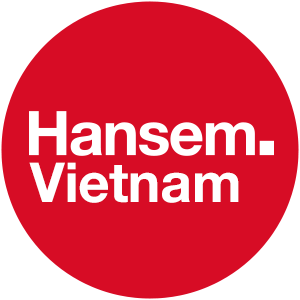list
Scripted by
Nhu Vu



In-house reviewer team in Hansem Vietnam
No one can deny the convenience of having Google Translate while travelling to a country whose language you do not speak. With a few touch and swipe, one shall bear no trouble understanding street signs, restaurant menus, simple instructions, and even product labels. This e-benefit is undoubtedly helpful, comparing to the burden of having to carry a dictionary in your suitcase.
What contributed to this convenience is that Machine Translation is being trained with new contents by seconds. Nowadays, it can provide somewhat-correct translation in both informal or formulaic contexts such as emails and business contracts. In other words, the fewer ambiguous sentences (sentences that can be understood in two or more ways) the source has, the more accurate the target would be.
Also, human’s insubstantial memory storage cannot compete with Machine Translation and its ability to store one’s unlimited target text. Storing the translated text can be beneficial not only to the amount of time and effort spent on the work but also to the quality of the future translation.
With all the above advantages, machine translation also comes with an unmatched rate and speed, which means this is the best option when you want to prioritize rapidity and budget. Google Translate can help you with a tremendous amount of word in almost any language in the blink of an eye, for free.
Still, even the most perfect thing has its flaw. Machine Translation can lead to unnatural target text or also cancel out the literary air of the source.
With all these mentioned pros and cons, a question arises: “When speed and money are not the main concerns, what option can you consider to have a better final product?” The answer, once again, can be either manual or human translation for the following reasons.
Some languages, especially English, use a lot of figurative, symbolic, or indirect ways of conveying a meaning. In some cases, slangs are also involved. These kinds of texts are where human translation can surely surpass machine translation by far. Despite its fast-growing pace, the machine’s ability to understand metaphors, jokes, sarcasm, or irony is still questionable. Let take some English idioms in the table below as examples.
| Source | Target made by Google Translate | Target made by human translators | Remarks |
| Beauty is only skin deep | Vẻ đẹp là chỉ là bề sâu | Tốt gỗ hơn tốt nước sơn | The machine translation not only left out the rhythm of the saying but also distorted the meaning. |
| As cool as a cucumber | Mát như dưa chuột | Điềm tĩnh | Idioms are never meant to be understood literally. Only human translation can successfully transfer the meaning of the phrase. |
| Break a leg | Gãy chân | Chúc may mắn | The human translator is much better at understanding between the lines. In the target generated by machines, something positive like “Good luck” has become “Broken legs.” |
The problems are not only happened with EN2VI translation. Observing the EN2MY Samsung projects gave me a chance to see the shortcoming of Google Translate in this language pair.
| Source | Target made by Google Translate | Target made by human translators | Remarks |
| So you get perfect picture quality as you’ve never seen before, even in the brightest and darkest scenes. | ဒါေၾကာင့္ သင့္အေနနဲ႔ ယခင္က တခါမွ မျမင္ဖူးတဲ့ အေကာင္းဆံုး ႐ုပ္ထြက္ အရည္အေသြးကို အလင္းဆံုး၊ အေမွာင္ဆံုး ျပကြက္ေတြမွာေတာင္ ရရွိႏိုင္ပါၿပီ။ | So you get the best picture quality you’ve ever seen before. Available even in the darkest scenes. | In the process of translating the human translation back into English, Google Translation has left out one part of the meaning. |
Besides literary contexts that need professional and experienced human mind, marketing contexts also requires a tremendous human understanding of the source to convey a style a brand brings. Any failure in translation would cost those brands customers and a lot of money. The same problem would be applied to contexts where cultural insights of a native speaker of the target language are required. In short, localization is the field that is mainly reserved for human translators.
Apart from the quality of the translation, the confidentiality of the source text is another thing that sets human translators apart. Using machine translation services and its translation memory, one faces the risk of exposing the content of the source text to other users of that service. With human translation, this issue is less worrisome since one neither has to upload the source text anywhere nor store your target text in a translation memory where some people might get access to it.
The advantages of human translation do come with some drawbacks. The speed and cost of this type of service are not favourable when one has a tight budget and time constraints. In cases you need to compromise the quality of target text under monetary and timing pressure, Machine Translation would be a more reasonable choice.

Hansem reviewers are editing or revising text that has been translated by MT
Both Machine and Manual Translation have their pros and cons. However, we do not have to choose one and abandon the other when we have both kinds of conversion in our hands. It is best for translation services to make use of the unparalleled speed of machines to create the draft target texts and then have them revised by human translators with all of their in-depth knowledge in the field. This way, the time needed to translate a document would be significantly reduced, and the translation drafted by machines can become alive. It is safe to say that masterly juggling between these two methods is another step for any Language Service Provider to have the best of both worlds.
Hansem Global is an ISO Certified and globally recognized language service provider. Since 1990, Hansem Global has been a leading language service company in Asia and helping the world’s top companies to excel in the global marketplace. Thanks to the local production centers in Asia along with a solid global language network, Hansem Global offers a full list of major languages in the world. Contact us for your language needs!